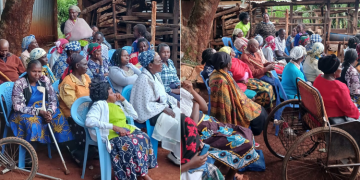Sand harvesting, once a modest economic activity, has grown into a major environmental and social challenge in Kenya. The demand for sand in the construction industry has skyrocketed, driven by rapid urbanization and infrastructure projects. However, unchecked sand extraction is causing severe environmental degradation, threatening water bodies, biodiversity, and the livelihoods of communities dependent on river ecosystems.
Kenya’s booming construction sector relies heavily on sand as a key material for concrete production. Rivers such as Athi, Tana, and Ewaso Ng’iro have become major harvesting sites, with truckloads of sand being extracted daily. In counties like Machakos, Makueni, Kajiado, and parts of western Kenya, rampant sand mining has led to the depletion of riverbeds, making water scarce and disrupting ecosystems.
Unregulated sand harvesting has also led to increased cases of riverbank erosion, loss of vegetation, and the destruction of aquatic habitats. In areas such as Makueni, entire stretches of riverbeds have been stripped of sand, leading to the drying up of water sources that once sustained agriculture and livestock.
Effects of Sand Harvesting
The environmental impacts of harvesting sand are far-reaching. Experts warn that excessive sand extraction lowers water tables, making it harder for communities to access clean water. The loss of sand also exposes riverbanks to increased erosion, worsening flooding in the rainy season. Additionally, aquatic life is severely affected as riverbeds lose their natural composition, disrupting breeding grounds for fish and other organisms.
Also Read: NEMA Issues New Sand Harvesting Regulations
Grace Mwende, Climate Ambassador for Kitui County, shares her concerns: “We’re facing environmental degradation by accelerating soil erosion and affecting soil fertility. As of now, sand harvesting has become a normal exercise, and my worries direct to rivers drying, economic inequality, wildlife habitat destruction, soil erosion, and the loss of lives and properties. Following up closely on the County Utilisation Act and Conservation 2023, it has taken too long to see any restoration of degraded lands due to unregulated sand harvesting.”
Beyond environmental concerns, sand harvesting has fueled social tensions. In many areas, conflicts have erupted over control of sand deposits, with some cases turning violent. The lucrative nature of sand harvesting has attracted cartels that operate with impunity, often exploiting local communities and workers. Reports indicate that these cartels bribe officials to circumvent regulations, allowing illegal mining to thrive.
Mwende further highlights: “The effects have contributed to soil erosion, biodiversity loss, landslides, and pollution of air, water, and soil. Mwingi Central is leading in sand over-harvesting—now, where will life be or look like in the next 10 years if Kitui is already at a 58% poverty rate? I was ready to train people in Climate Smart Agriculture and Environmental Conservation through Seedling Nurseries to support the JazaMiti program by planting more trees. However, there’s no water we can depend on. Sixty percent of people get water from River Scooped Wells, and the remaining boreholes sell a 20-liter jerrican for 3-10 Ksh, which is unaffordable to many in rural areas.”
Government Regulations
The Kenyan government has made efforts to regulate sand harvesting through policies such as the Sand Harvesting Guidelines of 2007 and the Environmental Management and Coordination Act (EMCA). Counties like Machakos and Makueni have imposed bans and strict regulations to control the practice. However, enforcement remains weak, with illegal mining persisting in many areas.
The National Environment Management Authority (NEMA) and county governments have tried to impose levies and enforce sustainable harvesting practices, but corruption and lack of political will have hindered progress. Communities and environmental groups continue to call for stricter enforcement and alternative construction materials to reduce dependency on sand.
Also Read: Restoring Kenya’s Green Heartbeat: The Need for Synergy Among Key Players in Reforestation
Mwende appeals directly to the authorities: “Now, my humble request goes directly to His Excellency Dr. Julius Malombe to demand accountability for non-functional projects, especially from the Ministry of Water, to help us access boreholes with running water. I also urge him to follow up on the completion of sand dams (Ming’eto/Silanga) in the 2023/2024 financial year to boost water and food security.”
Mitigating the crisis
Experts suggest that adopting alternative building materials such as manufactured sand (M-sand), recycled concrete, and bamboo can reduce reliance on natural sand. Improved policies, community involvement, and stricter enforcement of existing laws are crucial in mitigating the crisis.
Public awareness and responsible mining practices must be prioritized to balance economic needs with environmental conservation. Without immediate intervention, the unchecked harvesting of sand could lead to irreversible damage, affecting millions of Kenyans who rely on rivers for water, food, and livelihood.
Mwende calls upon relevant authorities: “Kindly, NEMA and the Ministry of Environment, Climate Change, Forestry, and Natural Resources in Kitui County, take action and lead. I believe the conservation of the environment will improve and boost revenue.”
As Kenya continues its development journey, sustainable solutions must be embraced to ensure that progress does not come at the cost of environmental degradation. The government, private sector, and communities must work together to preserve Kenya’s rivers and natural resources for future generations.
Follow our WhatsApp Channel and join our WhatsApp Group for real-time news updates.









































































